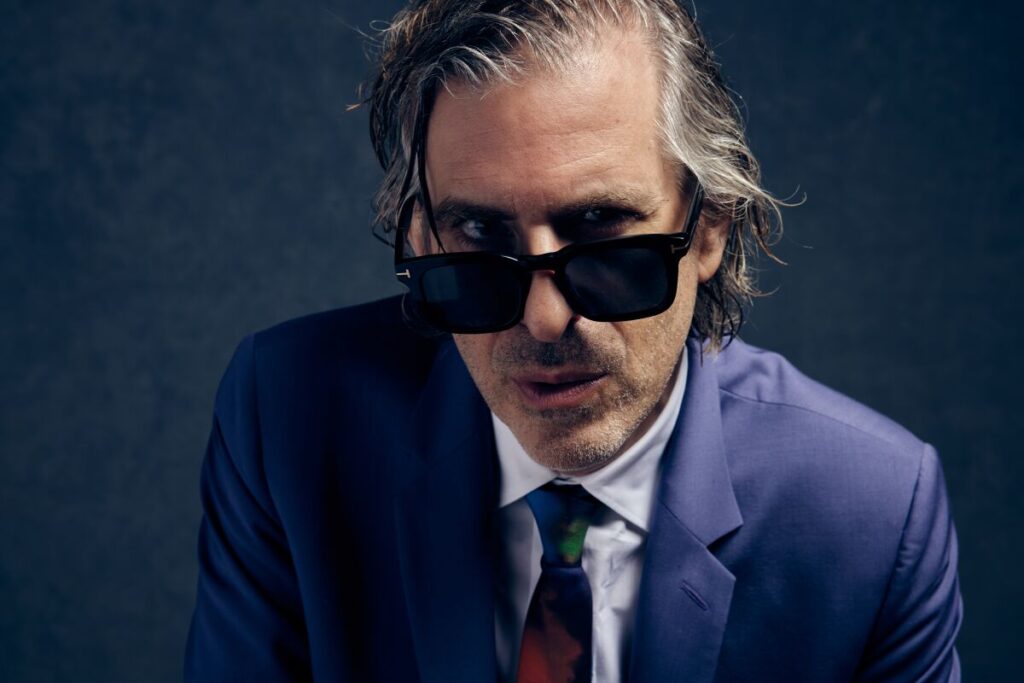Music documentaries have become a burgeoning industry unto themselves, as a cursory scan of any popular streaming platform will reveal. “Moonage Daydream,” Brett Morgen’s kaleidoscopic opus on chameleonic rock star David Bowie, is unlike the others, exploding convention in a dizzying archival phantasmagoria — and existential quest.
“The idea of the traditional music documentary is generally filled with clichés and facts and dates and information that don’t bring us any closer to understanding our truth,” Morgen said. “And if there is a truth that’s provided, it’s rare that it reflects back upon the viewer.”
Morgen, whose films include “The Kid Stays in the Picture” and “Chicago 10,” has already made two rock-docs, “Cobain: Montage of Heck” and “Crossfire Hurricane,” on the Rolling Stones. This time, he aspired to do something bigger and bolder. “All my films prior to ‘Moonage Daydream’ are fairly linear narratives. I would say that they’re fairly simple with a lot of salad dressing,” he said. For this one, he added, “I wanted to write an experience. I didn’t want it to be a three-act structure. I didn’t want it to feel that it had a structure, even though it had to have a structure.”
Filmmaker Brett Morgen
(Kent Nishimura / Los Angeles Times)
“Moonage Daydream,” which enjoys optimum presentation in the Imax format, saturates audiences in more than two hours of swirling sound and vision. The film often feels like a cosmic remix of Bowie’s entire existence — a simulation of consciousness — as Morgen refashions songs, interviews, performance footage, movie scenes and photographs, much drawn from a staggering 5 million assets in the singer’s archive, to which the singer’s estate granted access.
Morgen dove into the material not long after surviving a near-fatal heart attack in 2017. “David’s ideas about mortality and aging clearly resonated,” said the filmmaker, who ultimately centers on the performer’s philosophical lust for life, rather than rock ’n’ roll excess. The filmmaker also looked to Bowie, who died of liver cancer in 2016, for creative counsel. “If you listen to David, he says the way to create art is to go into the deep end until your feet can’t touch the ground anymore,” Morgen said. “And that was very true of this experience, both on every level as a producer, writer, director and editor.”
Although he eschews traditional chronology and rote career checkpoints — “It’s a movie, it’s not a discography” — the filmmaker found an organizing principle. Bowie scattered personas like glitter, from 1960s folkie to bisexual glam-rocker to the mysterious alien he played in Nicolas Roeg’s cult classic “The Man Who Fell to Earth.” The film arcs through his reinventions, touching on such themes as gender fluidity and spirituality, until it finally arrives at Bowie himself: “An artist who feels that they have to throw themselves into the fire to create art, until they learn to do without that.” Dissatisfied with fame and fortune, Bowie finds happiness with the supermodel Iman, his wife from 1992 until his death.
“The film is set up to invite projection,” Morgen noted, “to invite the audience to participate and to walk away with not a better understanding of David Jones [Bowie’s birth name], but a better understanding of themselves.”
One unexpected facet is an array of supplementary archival footage drawn from cinema history — glimpses from “Metropolis” and other classic movies — amid other media, that expand the film’s visual vocabulary, almost like footnotes.
“In addition to providing me with a greater sense of purpose and identity when I was a teenager, he also was a cultural passport,” said Morgen, who created a database of Bowie’s inspirations. “He introduced myself and most people I know to a world of culture that existed outside of our suburban street. In Bowie’s case, it was [William] Burroughs and Bertolt Brecht and German expressionism. And like [Bob] Dylan, his music is filled with Easter eggs and literary references, too. It’s part of the joy of Bowie.”
After years of immersion in everything Bowie, that joy abides for Morgen, who although not quite allowing himself to be pinned down does admit to a favorite Bowie song.
“Obviously, in true Bowie fashion, it changes day to day,” he said, before naming “Quicksand,” from the 1971 album “Hunky Dory.” “After my heart attack, that kind of became very comforting. Really comforting and inspiring like a warm blanket. I just feel like he’s touching heaven in that song and showing us what it looks like.” As he’s gotten older, Morgen said, he’s felt a deeper connection to Bowie’s later work, such as the 2002 album “Heathen,” which has gone underappreciated.
“My 14-year-old has been giving me endless s— recently because we get in the car and I’m putting on Bowie. [In an exasperated voice] ‘Dad! I thought we were going to be done now.’ And I’m like, ‘I’m still coming down, man. I’m still coming down.’ But I can’t.”

